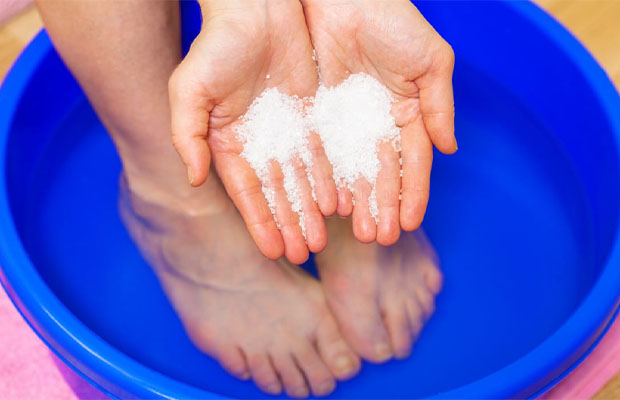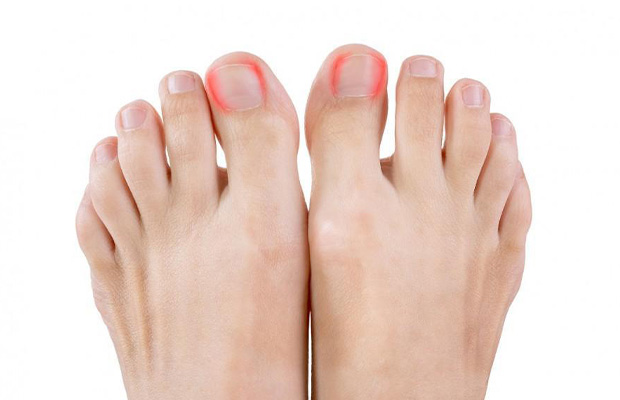How To Use Epsom Salt For Ingrown Toenail? Causes & Treatment

Living with ingrown toenails can be uncomfortable, and they can be challenging to treat. Running and walking is uncomfortable. If your toenail is ingrown, you might find that it hurts to even wear closed-toe shoes.
However, you can try a number of at-home remedies first, such as soaking the ingrown toenail in an Epsom salt bath, before going to a doctor. How to use epsom salt for ingrown toenail?
Starting with pure, premium magnesium sulfate is necessary for an epsom salt bath to be effective as a treatment for an ingrown toenail.
Learn more about the causes, signs, and remedies for ingrown toenails by reading on.
Table of Contents
What Is Ingrown Toenail?
An ingrown toenail is what? Onychocryptosis, a condition that also affects toenails, is characterized by ingrown toenails, which develop when the skin around a toe grows over the toenail’s bed or when a toenail’s edge irritates the tissue around it. Once your toenail pierces the skin, bacteria begin to grow, the area will begin to swell, and you run the risk of getting a serious fungal infection. An untreated ingrown toenail could lead to serious health issues.
Symptoms Of Ingrown Toenails
The symptoms of infected toenails are rather unusual. In many cases, it should be easy to tell that you have an ingrown toenail because you’ll have some combination of the following symptoms:
- Pain when you apply pressure on your toe
- Hard, tender, or swollen skin right next to the nail
- Redness
- Bleeding
- Skin that has grown over a part of your toenail
- A blister full of pus or a lot of drainage coming out of your toe
- Thick, cracked, yellowed toenails that suggest a fungal infection

Causes Of An Ingrown Toenail
The tendency of your nails to curve as they grow makes an ingrown toenail more likely to occur due to unfortunate genetics, but grooming or footwear habits are also common causes. Some of the most likely causes include:
- Cutting a toenail too long or too short
- An injury to your nail
- Tight or excessively narrow shoes that squeeze your big toe
- Cutting your toenail in a rounded or angled fashion
- Poor foot hygiene
- Certain sports such as skiing and dance
As you recover from this infection, please talk to us about how to stop future infections. While we can’t guarantee you won’t develop ingrown toenails in the future, we can help lessen the likelihood that you will even if you receive treatment.
Epsom Salt For Ingrown Toenails
Ingrown toenails are one of the most typical conditions that people treat on their own. How can Epsom salt treat a toenail that has grown inward? Make a warm water and Epsom salt bath for your foot as long as there is no discharge, pus, or other indication of infection on your toe. You can take a 20-minute bath several times per day, followed by a gentle massage of the area close to the infection to lessen swelling and boost blood flow.
After soaking your foot, thoroughly dry it off and apply an antibacterial cream to the toe.
Other Tips For Treating Ingrown Toenails
There are numerous additional methods you can use to speed up the healing of an ingrown toenail at home. Consider the following remedies:
- When possible, put on open-toed shoes. If you must wear close-toed shoes, pick a pair that allows your toes plenty of room to spread apart.
- Ingrown toenail skin should be carefully peeled away. Lift the skin away from your nail with the help of a small, blunt nail file or another similar tool.
- Treat the infected toe with antibiotic cream.
- To relieve pain, take over-the-counter medications. Short-term pain relief may be provided by acetaminophen or ibuprofen.
- If you suspect a fungal infection, apply an antifungal cream. These can be obtained over-the-counter or on a prescription from your doctor.
Related Reading: How To Care After Ingrown Toenail Removal?
How To Prevent Ingrown Toenails?
Take measures to avoid ingrown toenails if you discover that you have to deal with them frequently. You can try any of the following:
- Avoid having your nails cut too short or too unevenly.
- Make sure your socks and shoes fit properly; if you can’t move your toes in them, they’re too tight.
- Don’t let playing sports or engaging in other activities that put a lot of strain on your feet cause injury to your toes.
- Dry and clean your toes.
- Use toenail clippers, not fingernail clippers, and if your toenails are particularly thick, consider using toenail nippers, a spring-loaded tool.
When To Seek Podiatric Care?
It’s time to schedule an appointment at Hoosier Foot and Ankle if your ingrown toenail is severely infected or doesn’t improve with regular soaks. Under local anesthetic, we can treat an uncomfortable ingrown toenail.
Even if your ingrown toenail seems minor, you should still get checked out if you have diabetes or poor blood circulation. If you have diabetes, foot problems can become severe very quickly.
We might advise getting a phenol and alcohol matrixectomy if you frequently get ingrown nails. We numb the area and take out the nail’s problematic area during this procedure. A chemical called phenol is used to kill the nail’s forming cells. No longer can your nail grow and cause issues.
Never try to wait for an ingrown nail to go away on its own by ignoring it. There’s a chance that an infection will start, grow, and cause issues. Call Indiana’s Upperline Foot and Ankle or make an appointment online to have your toenail professionally treated if an Epsom salts soak isn’t enough to get rid of the problem.
You May Also Like: How To Cut Toenails?
Tags: Epsom Salt, Ingrown Toenail